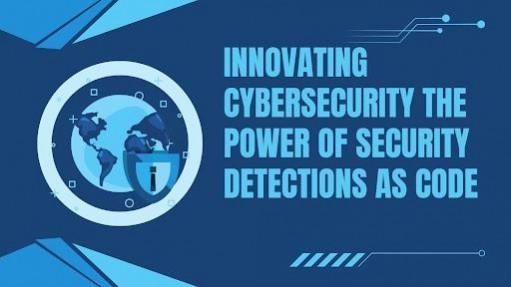
In this modern era of escalating cyber threats, organizations are rethinking their approaches to threat detection and response. Traditional methods often fall short in addressing the speed and sophistication of modern attacks. One emerging solution is Security Detections as Code (SDaC), which integrates software engineering practices with security operations to enhance threat detection efficiency. Sundar Subramanian, explores how this paradigm shift streamlines security operations, enhances accuracy, and improves response times.
A Game-Changing Approach to Threat Detection
SDaC's core principle is simple yet powerful: treat security detection rules as code. By applying software development methodologies like version control, testing, and automation, organizations can create, update, and deploy detection rules more efficiently. This mirrors successes seen in other IT fields, such as Infrastructure as Code, where automation and reproducibility are key. The results have been transformative, with organizations reporting improved detection speed, accuracy, and overall efficiency.
Leveraging Software Engineering to Enhance Security
SDaC revolves around defining detection rules using standardized syntax, such as YAML or JSON, making them easier to write, maintain, and verify. By integrating these rules into version control systems like Git, organizations gain better visibility and control over security configurations. This approach ensures that rules stay current and consistent across environments. Automated testing mechanisms, such as unit tests and simulated attack scenarios, further validate rules for accuracy and reduce false positives.
The Power of Automation in Cybersecurity
Automating the detection process through SDaC allows for the rapid deployment of new security rules. By using continuous integration/continuous deployment (CI/CD) pipelines, security teams can test and deploy detection rules in minutes, not hours or days. This speeds up operations and improves detection capabilities, enabling teams to focus on strategic threats instead of routine updates. Automation also reduces human error, one of the leading causes of security incidents.
Challenges in Adopting SDaC
While SDaC offers substantial benefits, its implementation comes with challenges. One primary obstacle is the technical learning curve, as security analysts must transition from traditional methods to those based on software development practices, requiring training in programming, version control, and CI/CD workflows. Additionally, organizations must address the cultural shift needed to foster collaboration between security, development, and operations teams.
Another hurdle is maintaining detection rules. As security teams continuously update and refine them, managing these updates across diverse environments to ensure consistency becomes complex. Moreover, managing false positives remains a critical challenge, as striking the right balance between sensitivity and efficiency is essential.
The Future of Security Detections as Code
Looking ahead, SDaC is set for further innovation. The integration of artificial intelligence and machine learning into security detection frameworks promises even greater efficiency, accuracy, and scalability. AI-driven systems are advancing in automating rule creation and refinement, significantly improving adaptability in dynamic and rapidly evolving threat environments. As this technology continues to evolve, SDaC will likely incorporate predictive capabilities, behavioral analytics, and real-time adaptation, further enhancing its role in modern cybersecurity, enabling faster and more accurate threat identification and response.
In conclusion, Sundar Subramanian highlights how Security Detections as Code represents a significant evolution in how organizations approach cybersecurity. By adopting software engineering principles, SDaC offers a more scalable, efficient, and automated method of threat detection. While challenges exist, the benefits such as enhanced detection accuracy, faster response times, and better collaboration make it worthwhile. As cybersecurity continues to evolve, SDaC will play a crucial role in defending against sophisticated threats, providing organizations with the tools they need to stay ahead in the digital age. His work in integrating software engineering into security operations is pivotal for advancing modern cybersecurity frameworks and practices.

















